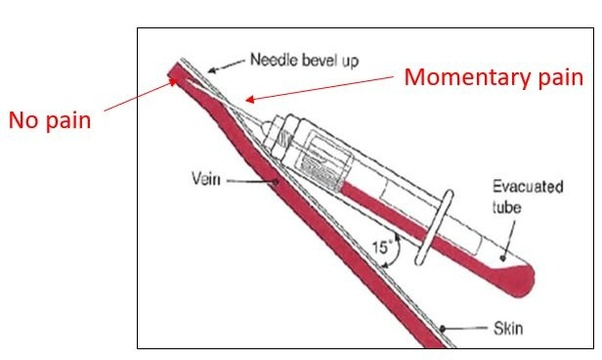Which of the following blood specimen tests are photosensitive and should be protected from light during handling and transportation?
Gastrin
Ammonia
Pyruvate
Bilirubin
The Correct Answer is D
Choice A reason:
Gastrin is a hormone that stimulates the secretion of gastric acid by the stomach. While it is a critical component in the digestive process, gastrin is not typically sensitive to light, and therefore, does not require protection from light during handling and transportation.
Choice B reason:
Ammonia testing involves measuring the amount of ammonia in the blood, which can indicate liver function and is used in the diagnosis of hepatic encephalopathy. Ammonia levels are not generally affected by light; thus, special precautions to protect from light are not necessary.
Choice C reason:
Pyruvate is a key intermediate in several metabolic pathways throughout the cell. Pyruvate itself is not considered photosensitive, and standard precautions for handling and transportation are sufficient to maintain its integrity.
Choice D reason:
Bilirubin is a breakdown product of red blood cells and is measured to evaluate liver function and to assess jaundice. Bilirubin is known to be photosensitive; exposure to light can cause it to break down, which can affect the accuracy of test results. Therefore, specimens for bilirubin testing must be protected from light during handling and transportation to ensure valid results.
Nursing Test Bank
Naxlex Comprehensive Predictor Exams
Related Questions
Correct Answer is A
Explanation
Choice A Reason:
The chain of custody form is crucial in the context of a toxicology drug screen for legal purposes. It is a document that records the sequence of custody, control, transfer, analysis, and disposition of physical and electronic evidence. It is particularly important in legal cases where the results of the toxicology screen can be used as evidence in court. The chain of custody ensures that the sample has been handled properly and that the integrity of the sample has been maintained throughout the testing process.
Choice B Reason:
A requisition form is used to request a specific test or service. While it is an essential document in the process of ordering a toxicology drug screen, it does not serve the same purpose as the chain of custody in terms of legal proceedings. The requisition form typically includes patient information, the tests ordered, and the reason for the test, but it does not track the handling of the sample.
Choice C Reason:
An encounter form, also known as a superbill, is used in medical billing to capture the services provided during a patient's visit. It includes information about the patient's diagnosis, the procedures performed, and the codes for billing purposes. However, it is not specifically related to the legal aspects of a toxicology drug screen.
Choice D Reason:
The CMS 1500 form is the standard claim form used by healthcare providers to bill Medicare and Medicaid services. It is also used by some private insurers and managed care plans. Like the encounter form, it is related to billing and not to the legal chain of custody required for a toxicology drug screen.
Correct Answer is A
Explanation
Choice A Reason:
Anchoring a vein is a technique used to stabilize the vein during venipuncture to prevent it from rolling. The recommended practice is to anchor the vein 1 to 2 inches below the puncture site. This is done by applying gentle traction on the skin downward with the thumb, which helps to stabilize the vein and facilitate the insertion of the needle.
Choice B Reason:
Anchoring 1 to 2 inches above the puncture site is not the standard practice. This position would not provide the necessary tension on the vein to prevent it from rolling and could make the venipuncture more difficult.
Choice C Reason:
Anchoring 2 inches left of the puncture site does not provide the correct angle or tension for stabilizing the vein for a venipuncture and is not a recommended technique.
Choice D Reason:
Anchoring 1 inch right of the puncture site is also not a recommended practice. Similar to anchoring to the left, this does not provide the proper stabilization needed for a successful venipuncture.

Whether you are a student looking to ace your exams or a practicing nurse seeking to enhance your expertise , our nursing education contents will empower you with the confidence and competence to make a difference in the lives of patients and become a respected leader in the healthcare field.
Visit Naxlex, invest in your future and unlock endless possibilities with our unparalleled nursing education contents today
Report Wrong Answer on the Current Question
Do you disagree with the answer? If yes, what is your expected answer? Explain.
Kindly be descriptive with the issue you are facing.
